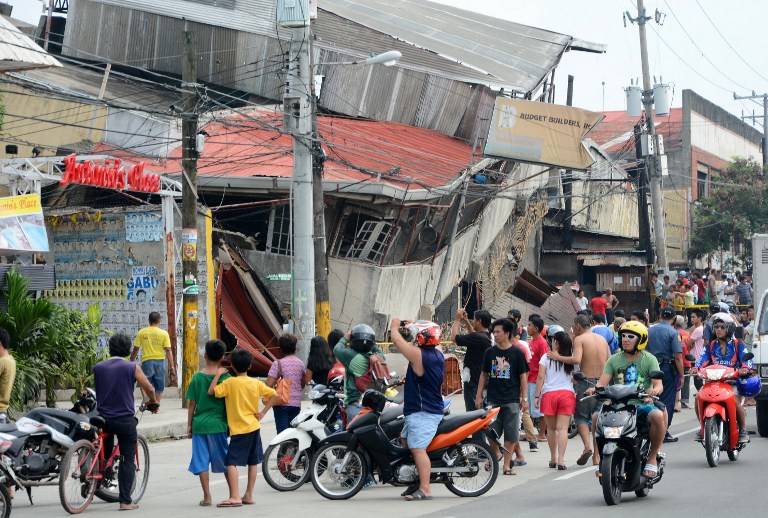SUMMARY
This is AI generated summarization, which may have errors. For context, always refer to the full article.

MANILA, Philippines (2nd UPDATE) – The death toll from Tuesday’s (October 15) earthquake in Central Visayas is now at 107, while more than 2.8 million people have been affected by the magnitude 7.2 tremor.
One hundred and seven (107) people are now listed dead, while 276 others were injured when the quake struck the region at 8:12 am Tuesday, the National Disaster Risk Reduction and Management Council (NDRRMC) said in its latest briefing Wednesday morning, October 16.
Out of the 107 dead, 97 came from Bohol, where the quake’s epicenter was located; 9 were listed as from Cebu, while Siquijor reported one dead, the NDRRMC said.
Of the injured, the disaster agency said 166 were in Bohol; 106 in Cebu; 3 in Siquijor; and one in Negros Oriental.
A total of 2,841,956 people were affected by the quake across Region VII (Central Visayas), in 3 provinces and 7 cities. This translates to a total of 558,390 families.
A total of 12,665 people were displaced from their homes in Bohol, equivalent to 2,533 families. Thirteen evacuation centers are serving 12,500 people, or 2,500 families. The rest are staying in homes of relatives or friends.
Aftershocks continue to shake the region. As of 8 am Wednesday, the Philippine Institute of Volcanology and Seismology (Phivolcs) reported 823 aftershocks, 12 of which were strong enough to be felt.
Damage to property and infrastructure have been reported as far as Iloilo and Negros Occidental, the NDRRMC reported.
The NDRRMC has yet to release an estimate of the cost of damage to property and infrastructure.
The Department of Health is now under code red alert, and the regional office in Region VII has conducted Rapid Health Assessment (RHA) in the region to assess the needs of the people after the quake.
The earthquake was centered just southeast of the municipality of Carmen in Bohol, with a depth of focus of just 33 kilometers. It was of tectonic origin, the Phivolcs said.
Authorities said the death toll could still climb, with authorities struggling to assess the extent of the damage in the worst-hit areas of Bohol where roads were impassable and power was cut.
Nevertheless, they expressed relief the earthquake occurred on the Eid al-Adha holiday, since there were fewer people in many of the major buildings that suffered damage.
Bohol and Cebu are currently under state of calamity, which will make it easier for government to deliver needed services in affected areas. Calamity funds are appropriated, the prices of basic goods are frozen, no interest loans may be granted, and additional allowances are allotted government officials and disaster agencies in the area.
President Benigno Aquino III is scheduled to visit the quake-ravaged areas on Wednesday. – With reports from the Agence France-Presse/Rappler.com
Add a comment
How does this make you feel?
There are no comments yet. Add your comment to start the conversation.